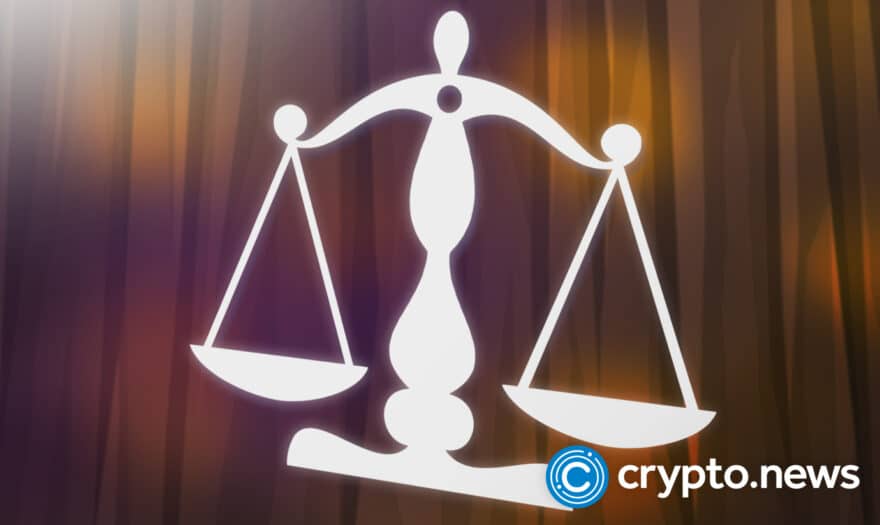What is zero knowledge proof and how does it protect your data?

What is zero knowledge proof, and how does it ensure privacy online? Learn what it is and why it’s important.
Imagine you hold a secret, and someone wants to verify that you know it, but you don’t want to reveal what the secret actually is. How is that possible? Enter zero-knowledge proofs (ZKP), a cryptographic concept that allows exactly that.
Zero-knowledge proofs, despite their complex-sounding name, offer a simple yet powerful idea: proving knowledge of something without disclosing the specifics.
Introduced in the 1980s, zero-knowledge proofs have since become a cornerstone of modern cryptography, offering a path to secure and private digital interactions in an increasingly data-centric world.
Let’s understand what is zero-knowledge proof, explore how they function, and the diverse fields where they find application.
Table of Contents
Zero-knowledge proof (ZKP) explained
ZKPs are a cryptographic method that enables one party, known as the prover, to demonstrate to another party, the verifier, that they possess specific knowledge without actually revealing that knowledge.
In simpler terms, ZKPs allow for the verification of information without disclosing its actual content. One of the most famous analogies illustrating zero-knowledge proofs is the “Ali Baba cave” scenario:
Imagine a situation where a prover, let’s call her Peggy, wants to prove to a verifier, Victor, that she knows the secret passphrase to enter a cave, without actually revealing the passphrase itself.
Peggy takes Victor to the cave entrance, enters, and then exits through a different route. She then challenges Victor to determine the original entrance she used.
If Victor can find the original entrance, Peggy will reveal the passphrase. However, if Victor cannot find the original entrance, Peggy successfully proves her knowledge of the passphrase without disclosing it.
In this analogy, the cave represents the secret knowledge (the passphrase), and Peggy’s ability to enter and exit the cave demonstrates her knowledge of the passphrase.
Importantly, Victor gains no knowledge of the passphrase itself because he cannot see which entrance Peggy used to exit the cave.
This example reflects how zero-knowledge proofs allow one party to prove knowledge of a secret without revealing the secret itself.
ZKPs have broad applications in areas such as authentication, privacy-preserving protocols, and blockchain technology.
How do zero-knowledge proofs work?
Zero-knowledge proof is achieved through a complex series of interactions. At the core of ZKPs are mathematical algorithms and protocols that enable this interaction.
One common type of ZKP is the interactive protocol, where the prover and verifier engage in a series of steps to establish the validity of the statement.
These steps are designed in such a way that the verifier can be convinced of the prover’s knowledge without the prover needing to reveal any specific information.
For example, consider a scenario where Donald wants to prove to Joe that he knows a secret number.
This is achieved through a series of cryptographic calculations and exchanges that allow Joe to verify the correctness of Donald’s claim without learning anything about the secret number itself.
ZKPs have wide-ranging applications. In addition to authentication and privacy-preserving protocols, ZKPs are also used in blockchain technology.
For instance, in a blockchain network, ZKPs can be used to prove the validity of transactions without revealing any sensitive information, such as the sender’s address or the amount transacted.
Types of zero-knowledge proofs
Zero-knowledge proofs (ZKPs) come in several types, each serving specific purposes and offering unique advantages.
The two major types include interactive and non-interactive ZKPs, and a few more, each with its own characteristics and applications.
- Interactive Zero-Knowledge Proofs (ZKIPs): Interactive ZKPs require the prover and verifier to engage in a series of interactions to validate the proof. The verifier presents challenges or questions to the prover, who must respond correctly based on their possession of the secret information. One example is the Schnorr protocol, used in proving knowledge of a discrete logarithm without revealing it.
- Non-interactive Zero-Knowledge Proofs (NIZKs): Non-interactive ZKPs, introduced in 1988, eliminate the need for interaction by using cryptographic algorithms based on pre-agreed parameters. Provers input their information into an algorithm to generate a proof, which the verifier then checks using another algorithm. While more efficient, NIZKs are computationally intensive. Examples include zk-SNARKs and zk-STARKs.
- zk-SNARK (Zero-Knowledge Succinct Non-Interactive Argument of Knowledge): zk-SNARKs enable a verifier to validate a statement without knowing additional details about it. They are succinct, non-interactive, and satisfy the ‘soundness’ requirement, making cheating unlikely. zk-SNARKs are used in projects like zkSync and Polygon zkEVM.
- zk-STARK (Zero-Knowledge Scalable Transparent Argument of Knowledge): zk-STARKs are similar to zk-SNARKs but offer scalability and transparency. They are faster for larger witness sizes and rely on publicly verifiable randomness instead of a trusted setup. StarkNet uses zk-STARKs for scalability and transparency in its operations.
- zk-SNARK (Zero-Knowledge Succinct Non-Interactive Argument of Knowledge): zk-SNARKs enable a verifier to validate a statement without knowing additional details about it. They are succinct, non-interactive, and satisfy the ‘soundness’ requirement, making cheating unlikely. zk-SNARKs are used in projects like zkSync and Polygon zkEVM.
- Statistical Zero-Knowledge Proofs: Statistical ZKPs allow a prover to convince a verifier with high probability, rather than certainty. They are useful when absolute certainty is not required, such as in certain cryptographic protocols.
- Arguments of Knowledge: Arguments of knowledge ZKPs prove that the prover knows a secret without revealing it. The Sigma protocol is an example used in digital signatures.
- Non-Black-Box Zero-Knowledge Proofs: These proofs allow the verifier to inspect the internal workings of the proof for additional information, ensuring transparency in certain cryptographic applications.
- Zero-Knowledge Proofs of Knowledge: These proofs not only demonstrate knowledge of a secret but also prove knowledge of how to derive it. The Schnorr identification protocol, used in digital signatures, is an example.
Zero-knowledge proof applications
Zero-knowledge proofs have a wide range of applications across various industries and technologies, thanks to their ability to enhance privacy, security, and efficiency in digital interactions.
- Blockchain technology: One of the most prominent applications of ZKPs is in blockchain technology. ZKPs can be used to prove the validity of transactions without revealing sensitive information, such as the sender’s address or the amount transacted. This can help improve privacy and scalability in blockchain networks. For instance, ZKPs are employed in Zcash (ZEC), a privacy-focused cryptocurrency. ZKPs enable users to prove ownership of funds without revealing their transaction history or account balance.
- Identity verification: Zero-knowledge proofs can be utilized for secure and privacy-preserving identity verification. For instance, they can be employed to prove that an individual is above a certain age without revealing their precise age or date of birth. Organizations such as QEDIT leverage ZKPs to enable companies to verify the integrity of their data without exposing it to third parties, thereby ensuring data privacy.
- Digital voting: ZKPs can be applied in digital voting systems to ensure the integrity of the voting process while maintaining voter privacy. ZKPs can be used to prove that a vote was cast correctly without revealing the actual vote. An example is the “CIVITAS” project, which uses ZKPs to enable verifiable and anonymous voting in elections.
- Data sharing and collaboration: ZKPs can enable secure and private data sharing and collaboration. For example, ZKPs can be used to prove that certain conditions are met without revealing the underlying data, enabling parties to collaborate without compromising sensitive information.
- Authentication and Access Control: ZKPs can enhance authentication and access control mechanisms. ZKPs can be used to prove ownership of a digital asset without revealing the asset itself, improving security in digital transactions. For instance, ZKPs are used in the “Sovrin” network to enable individuals to prove attributes about themselves, such as age or qualifications, without revealing unnecessary personal information.
- Privacy-Preserving Technologies: ZKPs are also used in privacy-preserving technologies, such as anonymous credentials and private set intersection protocols. These technologies enable secure interactions without revealing sensitive information.
Advantages and challenges of zero-knowledge proofs
Zero-knowledge proofs (ZKPs) offer several advantages.
Advantages
- Privacy: One of the key advantages of ZKPs is their ability to provide privacy by allowing one party to prove knowledge of something without revealing the actual information. This is crucial in applications where data confidentiality is paramount, such as identity verification.
- Security: ZKPs enhance security by enabling verifiable computations without exposing sensitive data. This is particularly important in blockchain and cryptocurrency applications, where transactions need to be validated without revealing transaction details.
- Efficiency: ZKPs can significantly reduce the computational and communication overhead associated with proving the validity of a statement. This efficiency makes them suitable for use in resource-constrained environments.
- Transparency: In some cases, such as non-interactive ZKPs using publicly verifiable randomness, ZKPs can offer transparency in the generation and verification of proofs, enhancing trust in the system.
- Scalability: Certain types of ZKPs, such as zk-STARKs, offer scalability advantages, allowing for efficient proof generation and verification even with large amounts of data.
Challenges
ZKPs also come with certain challenges that need to be addressed for widespread adoption:
- Complexity: Implementing and understanding ZKPs can be complex, requiring expertise in cryptography and mathematics. This complexity can hinder widespread adoption and implementation.
- Computational intensity: Generating and verifying ZKPs can be computationally intensive. This can lead to scalability issues, especially in applications with high transaction volumes.
- Trusted setup: Some ZKPs, require a trusted setup phase to generate public parameters. Ensuring the integrity of this setup and preventing potential attacks can be challenging.
- Prover knowledge: ZKPs rely on the assumption that the prover possesses the secret information they claim to know. Verifying this assumption without revealing the secret can be challenging in certain scenarios.
- Interoperability: Different ZKP systems may have limited interoperability, making it difficult to use ZKPs across different platforms and applications seamlessly.
The road ahead
As of today, zero-knowledge proofs have emerged as a crucial technology for enhancing privacy and scalability in various digital applications.
Recently launched ZK-powered blockchains like Polygon zkEVM, zkSync Era, and StarkNet show great promise. Their potential applications and impact are just beginning to be explored.
It will be fascinating to see how these technologies evolve and what new possibilities they unlock in the coming years.















